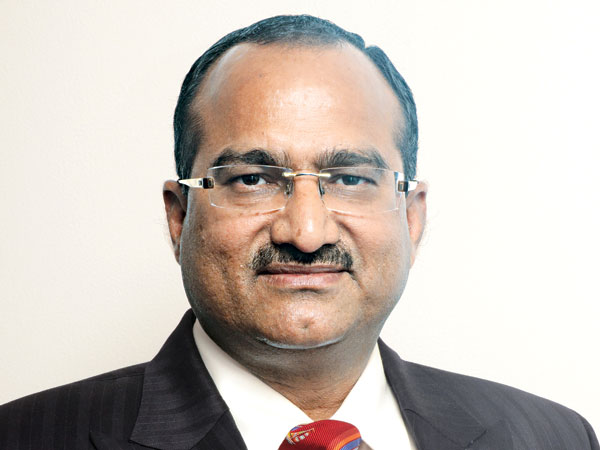Navi Mumbai International Airport will be ranked among the top three busiest airports in the country.
Capt. BVJK Sharma, CEO, Navi Mumbai International Airport How do you view the progress of India's infrastructure development and how is the airports sector contributing to this? In a recent address to the nation, Hon'ble Prime Minister Shri. Narendra Modi stated, India is poised to become the world's third largest economy in the next five

Capt. BVJK Sharma, CEO, Navi Mumbai International Airport
How do you view the progress of India's infrastructure development and how is the airports sector contributing to this?
In a recent address to the nation, Hon'ble Prime Minister Shri. Narendra Modi stated, India is poised to become the world's third largest economy in the next five years. Clearly the buoyant and bullish infrastructure growth of roads, highways and airports will support the nation's great leap forward.
As per a Press Information Bureau report, India's aviation industry has experienced significant growth in the past nine years. The number of operational airports in the country has doubled from 74 in 2014 to 148 in 2023. This growth can be attributed to the government's consistent efforts to improve airports and aviation infrastructure.
In FY22, airports in India pegged the domestic passenger traffic to reach 166.8 million, a 58.5% YoY increase, and international passenger traffic to reach 22.1 million, a 118% YoY increase, as compared to FY21. All this is a testimony of India's infrastructure growth and contribution of aviation in it.
Navi Mumbai International Airport is a crucial project for Mumbai and the MMR region. Can you give us an update on the progress of the project?
Since Adani Airports Holdings Ltd (AAHL) took over the development of Navi Mumbai International Airport on August 4, 2021, we have been taking rapid strides to complete the first phase of the airport.
It has been a challenging journey so far and we are all set to meet the deadline of December 2024 when we plan to open the airport to accommodate 20 Million Passengers Per Annum (MPPA) and 0.5 Million Metric Tonnes of cargo capacity. We have managed to complete more than 70 percent of the runway construction. The development of terminal building and other utility structures is going on in full swing.
What are the supporting infrastructures in terms of connectivity and non-aero services that will be coming up and what is the progress?
External connectivity is a key to operational efficiency of the airport and convenience of passengers, especially for in-the-city airports where there is a possibility of conflict between airport access traffic and pass-by traffic.
Based on the traffic studies, various multimodal city-airport connectivity infrastructure has been planned to ensure direct, signal-free, and high-speed connectivity to the airport, at the same time ensuring maximum possible segregation from the city traffic.
The existing Sion-Panvel Highway, Palm Beach Road, Amra Marg (NH348 A) and NH548 provide connectivity to the project. There are other planning and developmental agencies that are handling the support infrastructure and connectivity related projects.
Mumbai Trans-Harbour Link (MTHL) is expected to be operational by the end of this year and will facilitate connectivity from South Mumbai to Navi Mumbai. MTHL is planned to be connected with the project seamlessly through planned Ulwe Coastal Road and airport link road by CIDCO. Along with these projects, signal-free, high-speed, last-mile connectivity to the airport is planned through a combination of ramps and loops at the entry of the airport.
Also, various junctions, link roads, and loops have been planned around the airport that shall be implemented incrementally in coordination with the phase-wise airport development to ensure hassle-free travel for the passengers.
Furthermore, the construction work of metro rail connectivity is in full swing, the Metro Line 2B D N Nagar to Mandale. The Metro Line 8 connecting Mumbai and Navi Mumbai airport is planned and will have a station in Mankhurd. Stations of Line 2B and Line 8 shall be integrated at Mankhurd using pedestrian walkway increasing the overall catchment of Metro users travelling to airport.
Navi Mumbai Pendhar (Taloja)-Belapur Metro Line is also nearing completion and is waiting for commercial operations. Extension of the same Metro line as proposed by CIDCO shall provide access to the project in later phase of project development.
We are also engaging with the authorities to facilitate water transport from Radio Club in South Mumbai to Panvel Creek.
 There are plans to connect Mumbai International Airport with the NMIA through a dedicated metro line. How is this working out and when is this going to be ready?
There are plans to connect Mumbai International Airport with the NMIA through a dedicated metro line. How is this working out and when is this going to be ready?
CSMIA and NMIA is proposed to be connected through Metro line 8 also known as the Gold Line. MMRDA and CIDCO has initiated DPR work for implementation of the project.
When will the airport become operational in its full capacity and how many domestic and international flights will be operational after fully operational?
After completion of Phase-1 in December 2024, the remaining phases will be implemented over the next 15 years as this is subject to growing passenger volume and external connectivity. It is too early to give details on the number of flights.
What role will Navi Mumbai International Airport play in the overall growth of India's airport and aviation sector?
With the above stated plans, Navi Mumbai International Airport will surpass Mumbai airport as well as other airports in the region when it comes to handling passenger and cargo traffic.
It will be ranked among the top three busiest airports in the country. NMIA will be a complementing airport for Mumbai which is the commercial capital of the country. Clearly the airport will play a role in India's $5-trillion economy dream and create more than 100,000 jobs directly and indirectly in the airport region.

Hits: 13







